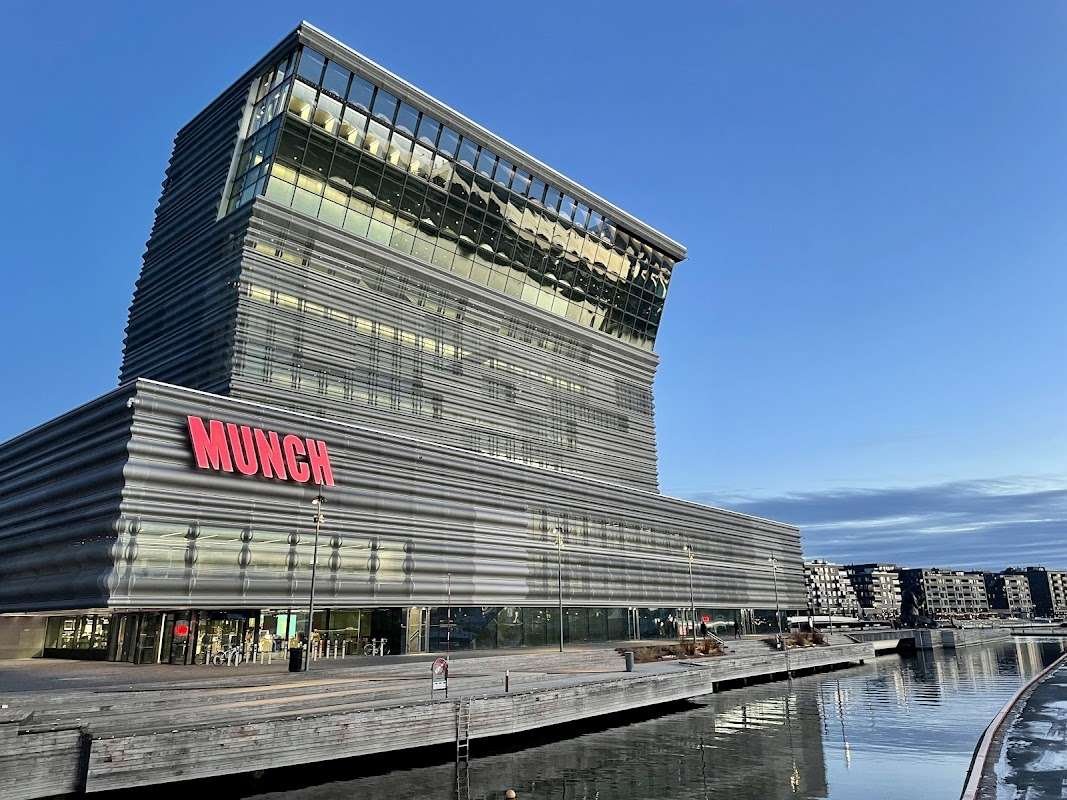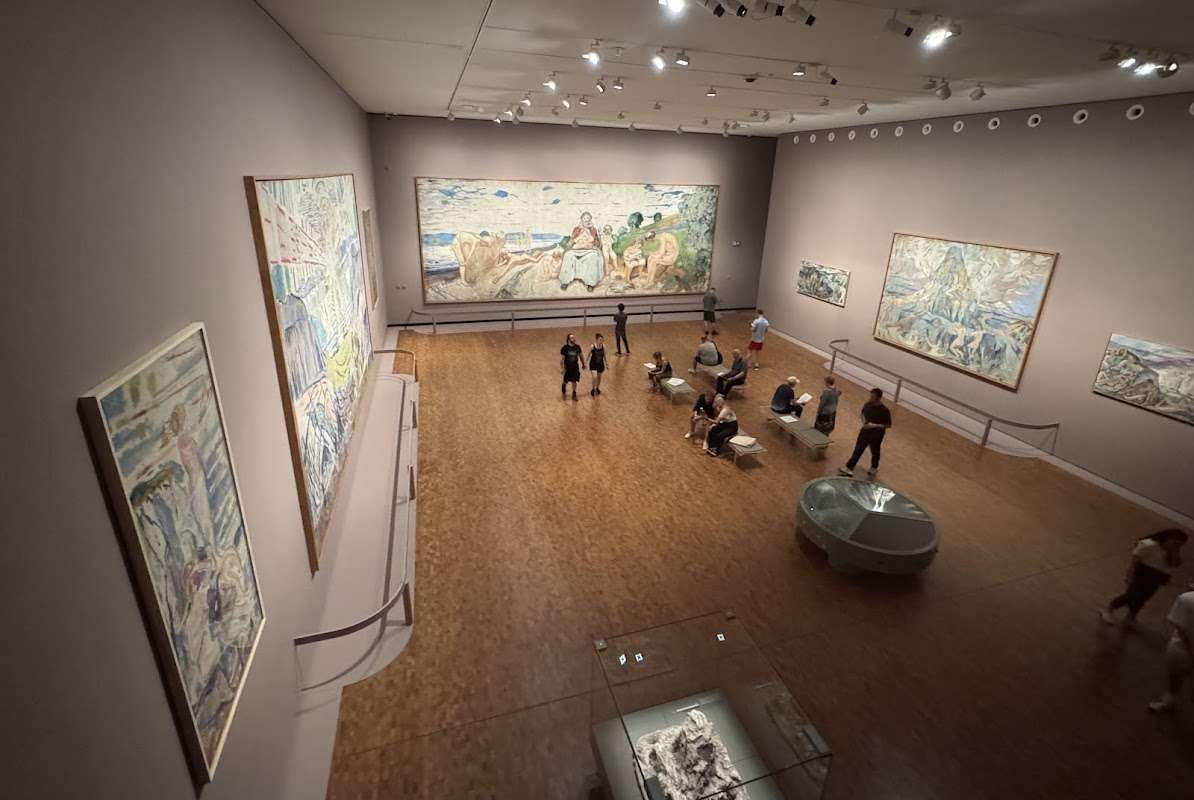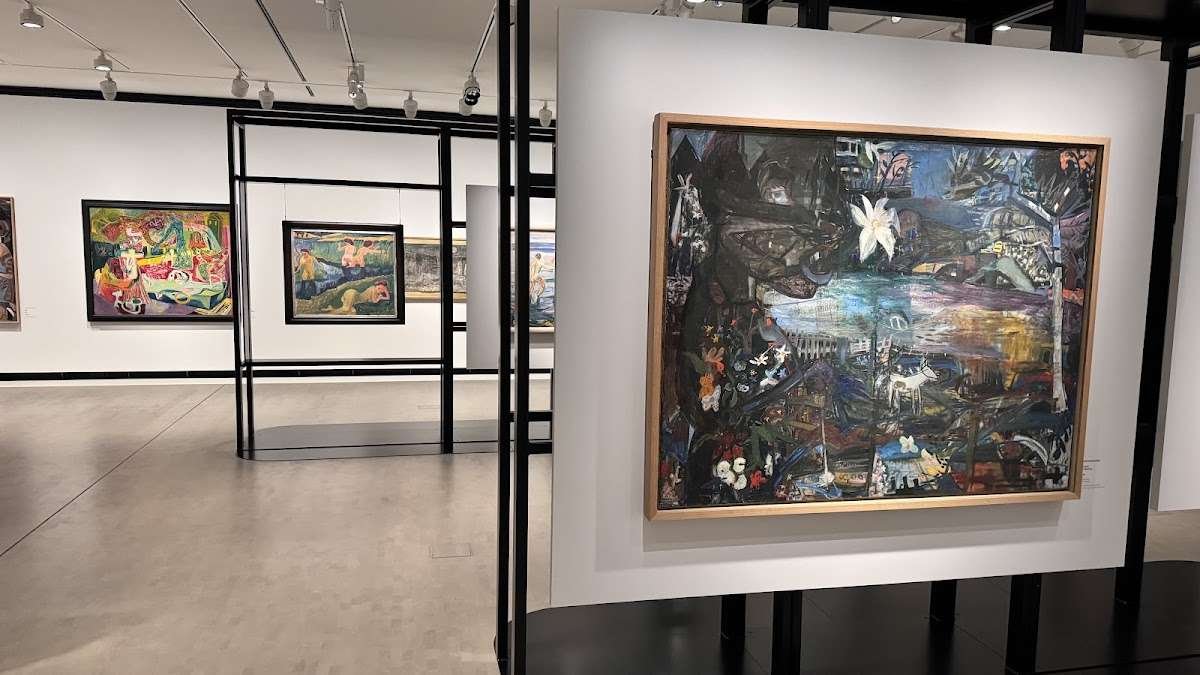The Munch Museum: not just "The Scream". What to see and how to read the artist in Oslo
Get ready to be amazed, because Oslo will quickly shatter any preconceptions you may have about Edvard Munch! While he is most famous for his iconic painting, The Scream, there is so much more to explore in this incredible city. The new MUNCH building on the Bjørvika waterfront is an absolute must-see! It offers 13 floors of living art, from early self-explorations to monumental canvases, from graphics to multimedia installations about his life and home in Ekeberg. The National Museum showcases The Scream in a captivating national context, while the University Hall unveils the radiant, celebratory side of Munch that is simply mesmerising. We are thrilled to share the answers to the 12 most frequently asked questions below. You will learn where to find the "non-Cries", how the permanent exhibitions are organised, what surprises the graphics have in store, and how Oslo's museums tell the artist's biography in detail.

Where is the Munch Museum? How is the new one in Tøyen different from the old one?
Today, the Munch Museum is in Bjørvika, next to the Opera House. The collection was moved there from the old building in Tøyen. The new MUNCH is a "vertical" museum tower (13 floors), specially built for large canvases and different exhibitions. It opened on 22 October 2021, and since then, you can see more of Munch than ever before, as well as contemporary art programmes. The main idea is to change what a museum can be: from traditional to modern.
What else is there to see in the museum besides 'The Scream'? Which series and motifs are included in the permanent exhibition?
Start with the large collection exhibition, Edvard Munch Infinite. It is a journey through the artist's themes, which include love, anxiety, death and loneliness. Here you will find "Madonna", "The Sick Girl", "The Dance of Life", "The Sun", rare self-portraits and masterpieces that are not very well known. The exhibition shows how Munch used the same themes over and over again. Look at the different versions and techniques (like painting, drawing, and graphics) to see how the tones and colours changed. This way, you will see "non-The Scream" — a whole universe.
Where can you see The Scream at MUNCH, and where are the other versions?
Munch made four versions of The Scream in different colours: two paintings and two pastels. There are two versions in the MUNCH collection, one is in the National Museum, and another is in a private collection. At MUNCH, one of the versions (a painting, drawing or print) is always on display in the rotunda on the 4th floor, with the exhibit being changed for conservation reasons — this is part of the permanent exhibition Edvard Munch Infinite. If you want to see the painting from 1893, go to the National Museum.
How does MUNCH work with the National Museum, and how should you spend your time there?
The National Museum has a "Munch Hall" where you can see key works (including the early "The Scream"), as well as art by other Norwegian and European artists from the 19th and 20th centuries. MUNCH is an immersive experience: large-scale cycles, rare canvases, graphics, personal stories and media installations, plus contemporary art exhibitions that respond to his themes. The best way to spend a day: The National Museum's exhibitions include:
- MUNCH: Infinite (4th floor)
- Monumental (6th floor)
- Shadows (7th floor)
What is "Shadows" and how does it tell Munch's story?
Shadows is a permanent multimedia display on the 7th floor, where Munch's home in Ekely has been rebuilt. Light, sound and film bring together what happened in his last decades. It's like a "living archive". You feel like you are entering the rooms, hearing footsteps and reading memories. This experience adds a personal and emotional layer to the paintings — how the artist lived, worked and viewed the world after his crises. It's a great mix of his life story and the ideas in "The Frieze of Life."
Why is Munch's graphic art a "second key" to his world?
Munch's graphics are not just copies. They are their own laboratory. Look at the sheets for "Madonna," "The Sick Girl," and "The Vampire." By changing the colour and lines, the artist makes the image more dramatic and makes it seem closer. At MUNCH, the graphic series are displayed with the paintings so you can see how one flows into the other. Many of the prints and matrices are rare. To get started, take a look at the museum's online essays on graphic art.
How is the MUNCH building structured, and why is its outline so easily recognisable?
The project by the Spanish company Estudio Herreros is a tower that leans at an angle. It has become a new landmark in the harbour. The front of the building has aluminium panels that are either fully or partially see-through. The museum looks like it is breathing and its appearance changes slightly as the light from the fjord changes. The total area is about 26–26.3 thousand square metres; the architecture is there to support the exhibition: vertical connections, cargo routes, "black boxes" for media. The meaning is simple: the city and the sea are outside, and Munch's "inner cosmos" is inside.
Is it true that giant canvases are brought in through a hole in the wall?
Yes, some paintings are very big. They can be as big as 50 square metres. This means that normal lifts and doors will not work. There is a special opening in the wall on the 6th floor next to the water. The building work is delivered in special boxes by barge and lifted by a crane to a height of over 26 metres. This is not only amazing, but also shows how big the museum's vision is — to safely store and display huge paintings.
Where in Oslo can you see Munch's huge paintings "in the city" rather than in a museum?
Go and see the Oslo University Hall on Karl Johans gate. 11 of Munch's paintings from 1911 to 1916 are on display here, including the famous "Sun", "Alma Mater" and "History". This is a rare chance to see the artist's bright, cheerful side — huge paintings on the historic stage of the city. The university has great resources about the series and its history — from the competition to the final decision and installation.

I want to read Munch's paintings in one day. Which way is the best way to go through the MUNCH galleries?
Look for the "spiral of meanings". First, Infinite (4th floor): the main ideas and symbols. Then go to the Monumental exhibition on the 6th floor, where you'll see large-scale paintings that Munch created by thinking about space. Finally, Shadows (7th floor): a personal story in sound and light that makes you see the paintings differently. If you have enough energy, go to the top floors and look out over the city. Then compare what you can see with the "Munch Hall" at the National Museum.
How do Oslo's museums show how Munch's work is still influencing art today?
MUNCH is not a "mausoleum" but a place for people to talk together. As well as having permanent exhibitions, there are also contemporary art projects, performances and artworks that have been specially created for the museum. The idea behind the exhibition is to look at Munch's work through the lens of modern themes, such as the body, anxiety and memory, rather than just focusing on his history. This way, the artist remains in the present — you see not an "icon" but the living nerve of art.
Where can you find other Norwegian classics to understand the context of Munch's era?
At the National Museum: Harriet Bakker (tonal interiors, Blue Interior) and Christian Krog (social realism) help us to "train the eye" to the Norwegian turn of the century — and better understand what inspired Munch. The museum has a large collection of artworks and information about the artists, including Munch's "selected works." It is the perfect way to get ready for a visit to MUNCH.

Oslo is the place to be for anyone interested in Munch! Here, you can see his anxiety and tenderness, the intimate and the monumental, the graphics and the light of the rooms where the paintings themselves "speak". At MUNCH, you'll have the incredible opportunity to hear the artist's personal voice. At the National Museum, you'll get to place him in a broader context. And at the Aul, you'll feel the sunny, solemn tone of his legacy. Come and collect your very own version of Munch — with a careful eye and a slow pace as you wander through the floors.
We would absolutely love to hear your thoughts in the comments!
If you have any interesting photos, personal experiences or questions, please leave a comment – we can't wait to hear from you! We can't wait to hear from you, because we're on a mission to create the most popular and useful blog about Norway!





1 comment
Log in to leave a comment